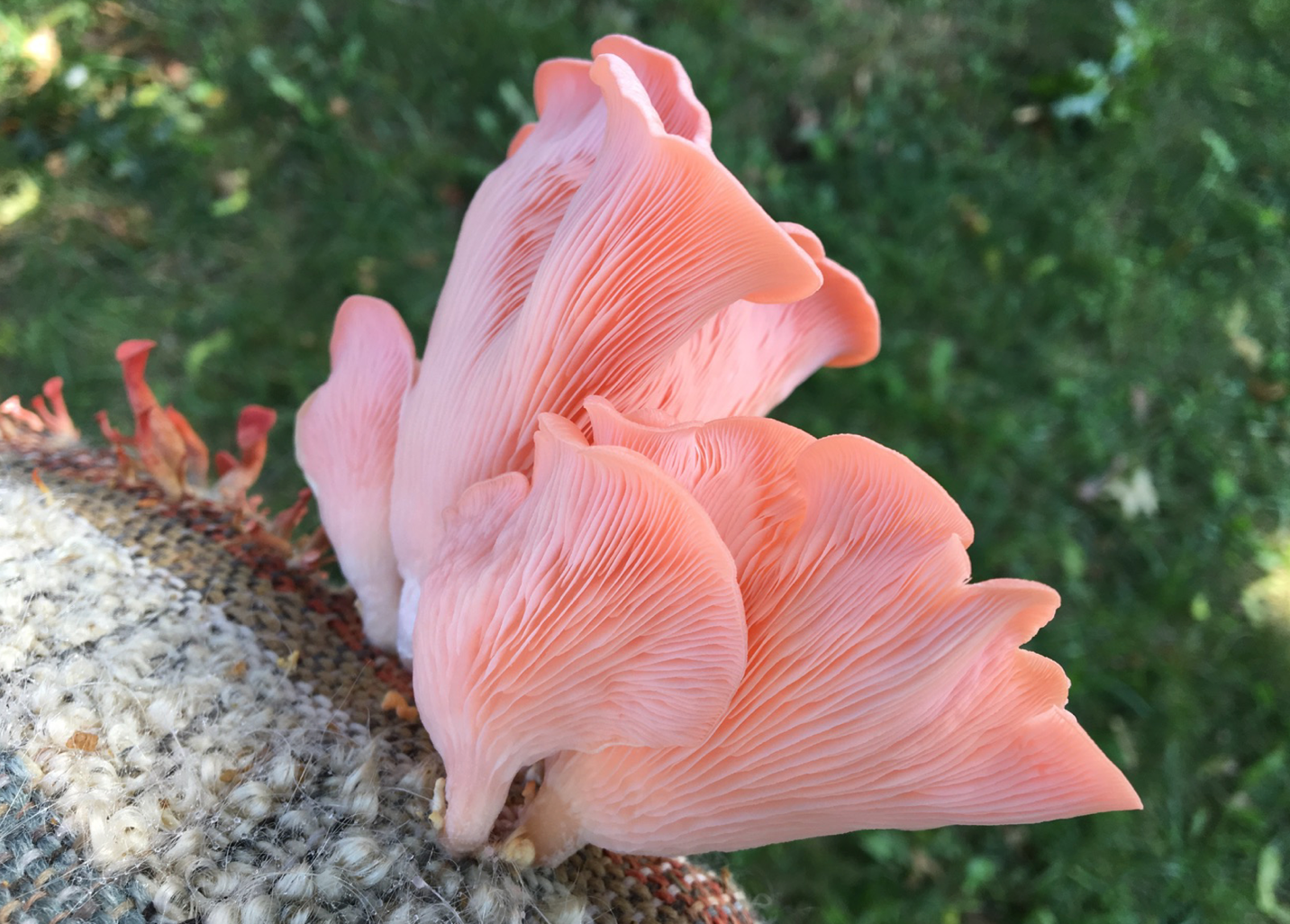
Photo: A Oyster Mushroom fruits through one of Carol Padberg’s handwoven wearable sculptures.
Carol Padberg's fully integrated art and educational practice
Olivia Ann Carye Hallstein
Carol Padberg lives her practice. Through a combination of material work creation and a back-to-the-land, spiritually integrated lifestyle, the artist/educator is fully entrenched in her mission. Padberg was the founder of the low residency Nomad MFA program through the Hartford Art School at University of Hartford (2015) and along with Mary Mattingly, appling the Nomad curricular model also recently founded the Confluence MFA concentration (2022) at the University of New Mexico in Albuquerque. This unique regenerative culture program integrates multiple sites in the Americas with a focus on both ecology and community. View her TED talk here for more information: Radical: Art, Education and Ecology | Carol Padberg | TEDxUniversityofHartford
Interview
Carol, a word that comes to mind when exploring your work is: connection. Whether the connection is between fiber and living organisms and/or people and the planet, the weavings you present seem to be both literal and abstract manifestations of this interconnectedness. What drives the dedication to develop and promote these connections?
We are living in a time that has been devastated by the myth of separability. Yet we are all connected. My efforts in raising sheep and weaving, my commitment to work with mycelia and indigo, all of it is driven by the need to return to non-extractive economies, ancestral practices, and a direct, interspecies connection to the web of life. So, yes, ‘connection’ is a key concept for me. It is essential to understand this word within the ecological, political and cultural context of this destructive myth of separability. Another way the idea of connection shows up in my work is that the mycelial sculptures I make decompose back into the soil of the dye gardens. This way the life cycle of the art is directly connected to the life cycles of the planet.
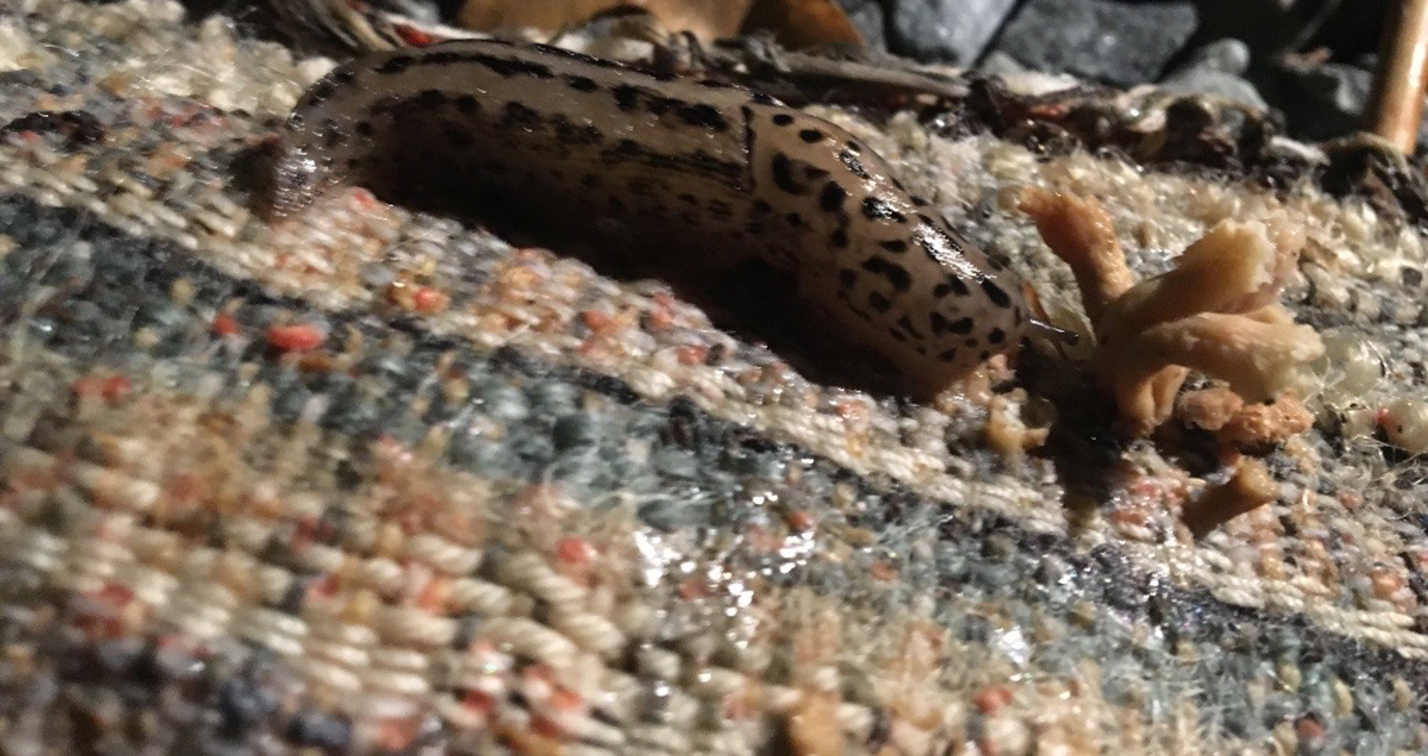
Photo: A slug eats one of Carol Padberg’s decomposing mycelial sculptures, accelerating the release of nutrients and mycelia back to the soil (2018).
A huge aspect of challenging separability and a necessity in connection is intimacy. In “Meeting Mycelia” (2019) and the “Mycelial Muse Kit” (2022) you explore deep emotional and nurturing relationships with natural growth and cycles. How does the relationship between human and earth develop through these processes?
A human being is an interspecies being. We have more non-human DNA in our bodies than human DNA. This is thanks to the bacterial and fungal communities that keep us healthy in our gut, on our skin and in ways we have not yet scientifically named. So, interspecies intimacy is “built-in” to mammals like us. When you consider this deep interspecies reality, it can be surprising that we need to pause to remember this. Yet here we are, with our idea of individuality, which is a biological fallacy. I want to trouble this idea of ‘appreciating nature’ by completely breaking down the human/nature binary. We must undo this idea that we are separate from nature. Art that creates a direct experience of our skin’s mycelial community to the mycelial community of the forest floor is not only poetic, but useful. This art has the ability to remind us to listen with our cells, loosen our grasp on individual selfhood and build new neural pathways that may foster better ways of knowing.

Photo: Carol Padberg's spun wool from her sheep, created on a 17th century walking wheel.
And you practice what you preach: your regenerative practice has expanded beyond artistic production and has become a way of life for you at the Nook Farm House. What role does place hold in your socially-engaged environmental art practice?
In the past sixteen months I moved from Nook Farm House on the east coast of Turtle Island to Tewa land in the Southwestern region, to bring the Confluence curriculum to the University of New Mexico. All last year I felt bereft leaving Nook Farm House in Hartford, and yet it continues in new forms. Now I live on a farm in Northern New Mexico where I have a workshare arrangement in exchange for lodging. I raise wool sheep here and they graze on the grasses of this apple orchard. I also grow indigo to contribute to the local fibershed. I am fortunate to live in an area with abundant textile traditions: from the Pueblo peoples, the Diné, and the descendants of Hispanic settlers. I am a student of this place: observing, listening and growing as I adapt. And I am being shaped by the tenacious and fragile high desert. In my mycelial practices I have begun working with the Oyster Mushrooms I meet in the Jemez Mountains. And I am also beginning a project that considers the Questa Mine Superfund site and questions conventional ideas about remediation. As most of the materials I use as an artist come from the place where I live, a change in location brings new possibilities and requires adding new skills. So I am in a time of adaptation, and this is invigorating.

Photo: A participant in a Meeting Mycelia workshop feeling the mycelia of fruiting Oyster Mushrooms through his eyelids (2020)
In the spirit of creating this bridge, you have been incorporating new growth (mycelia) into textiles in recent years. How do these living woven cloths relate meaning to this inseparability?
This is an ontological question, and by that I mean it relates to how we know what is. Let’s get mystical for a moment… One of the ways I walk in the world is as an animist who participates in old ways that have been carried down from my deepest human ancestors. I am from descendants of settler colonists on both sides of my family. But before we were colonized and trained into colonialism, we were living in Northern Europe and practicing a belief system in which weaving was world making. The three fates wove past, present and future. By collaborating with Oyster mushroom mycelia, who create by metabolizing rotting wood, I am considering how to process my family history and the trauma we have created in the world. How do we digest this? I practice spinning and weaving on ancestral wheels and looms as a way to reconnect with my heritage and then I work with mycelia because they are the best teachers of metabolization. How do we weave a future from this time period we have been born into? I believe textiles and mycelia hold clues.
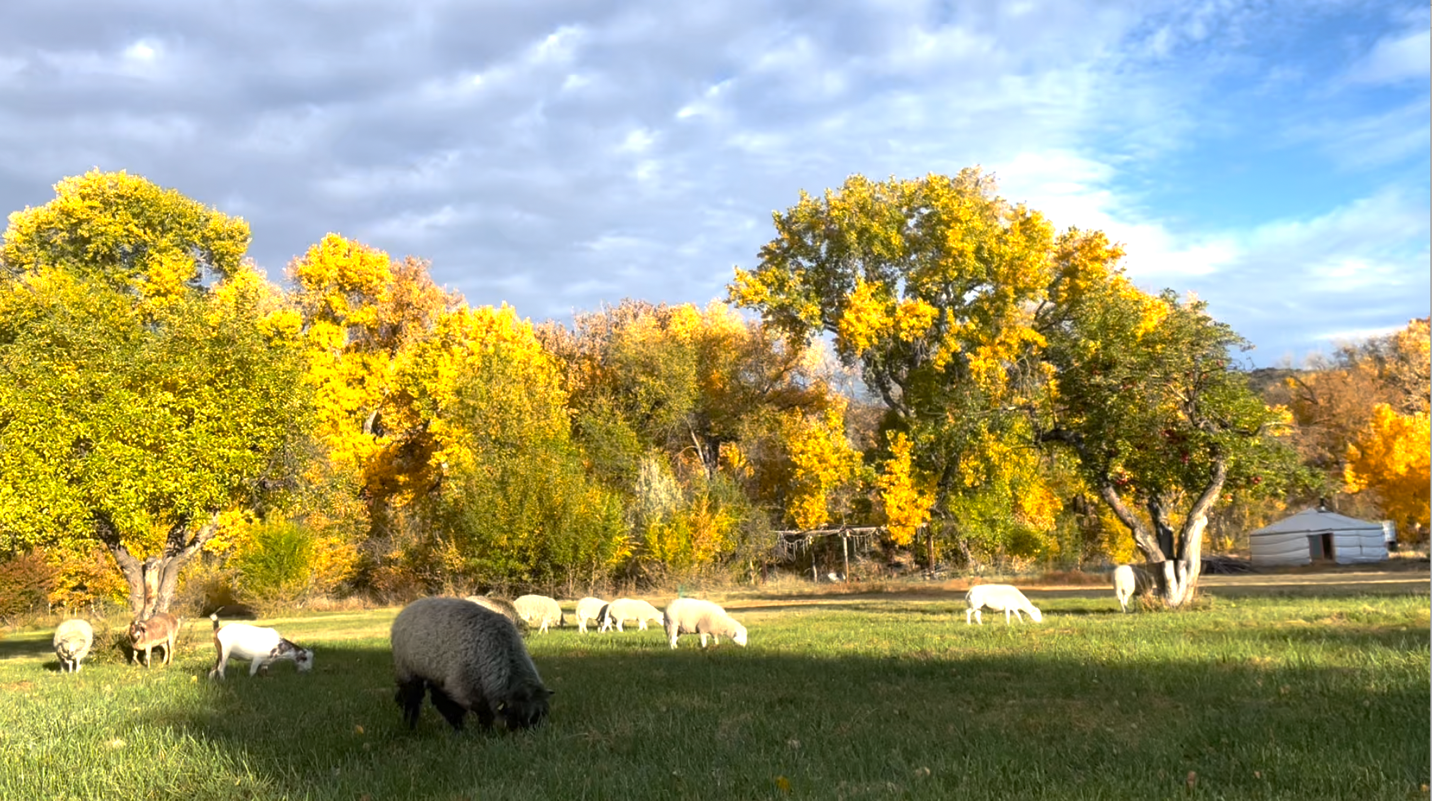
Photo: Sheep grazing near Carol Padberg’s Ger (Yurt) on the Northern New Mexico apple orchard where she lives, October 2023.
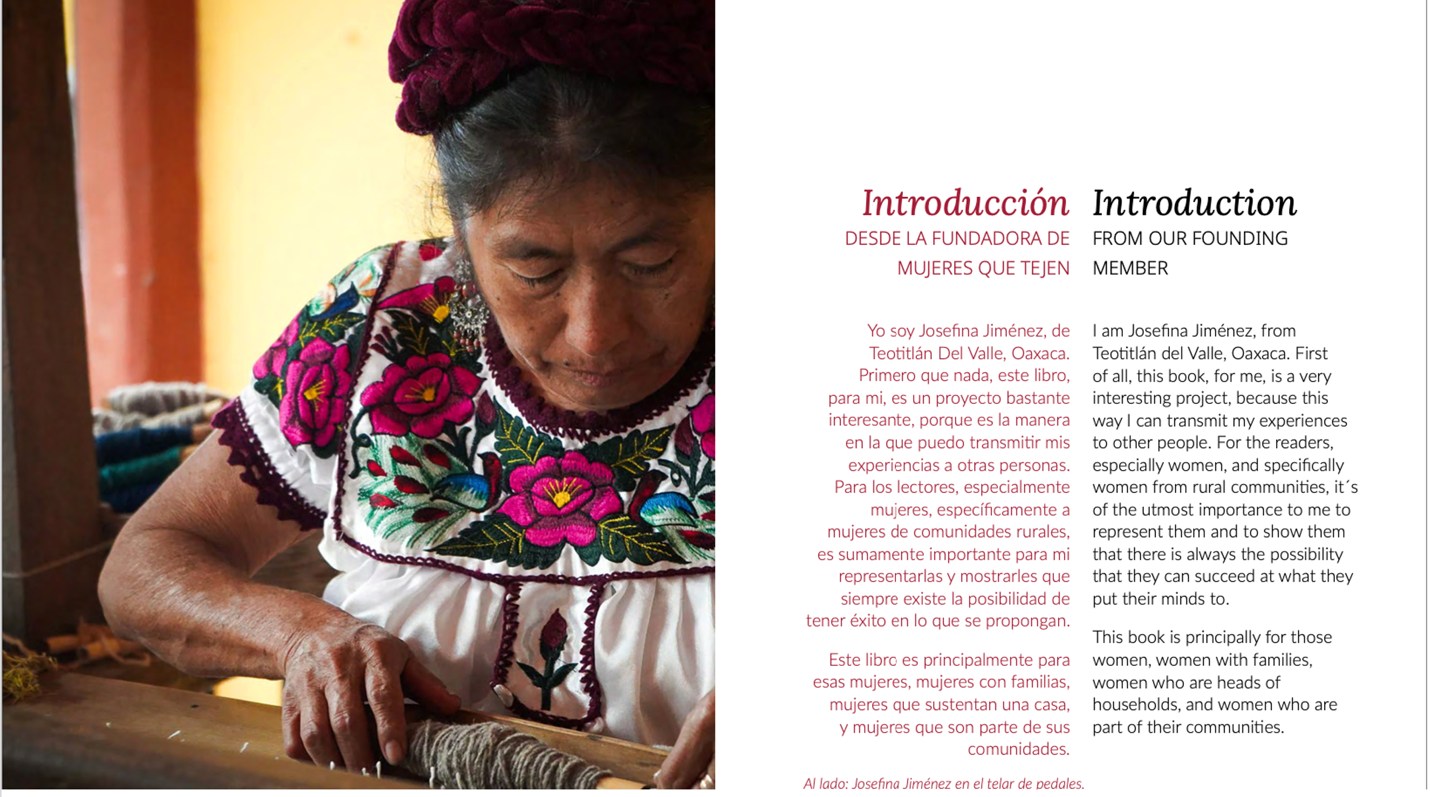
Photo: A selection from the book Otra Visión: Mujeres Que Tejen, created by students in the Confluence MFA in collaboration with the Mujeres Que Tejen Weaving Collective in Valle de Teotitlán, Oaxaca, México, 2023.
Your work is both in practice and in education. The MFA programs you have developed have been called “the MFA of the future”. What inspired you to develop these novel models?
I deeply believe in the power of education to change lives and shape our world for the better. A democracy requires relevant, varied, and thoughtful educational institutions. In terms of the Confluence MFA, we are proud to be part of a state university that serves a majority POC student body. The leadership at the University of New Mexico is forward thinking, and adaptive to the changing conditions we are living in. Are we the MFA of the future? I think when people tell us that, what they are noticing is that we are purpose-driven, holistic, and that we have a low-residency format that is practical for working adults. An MFA dedicated to regenerative culture is a niche MFA. It serves a very specific need. There is no one MFA for the future, thank goodness. As the program will soon be ten years old, I would say it is going well. We are continuing to evolve a curriculum that gives students an expanded toolkit with which to address the world’s most complex issues. We attempt to do this in a way that is trauma-informed, liberatory and engaged. Is it easy work? No. Is it meaningful? Absolutely!
Confluence MFA Online Openhouse, info here.
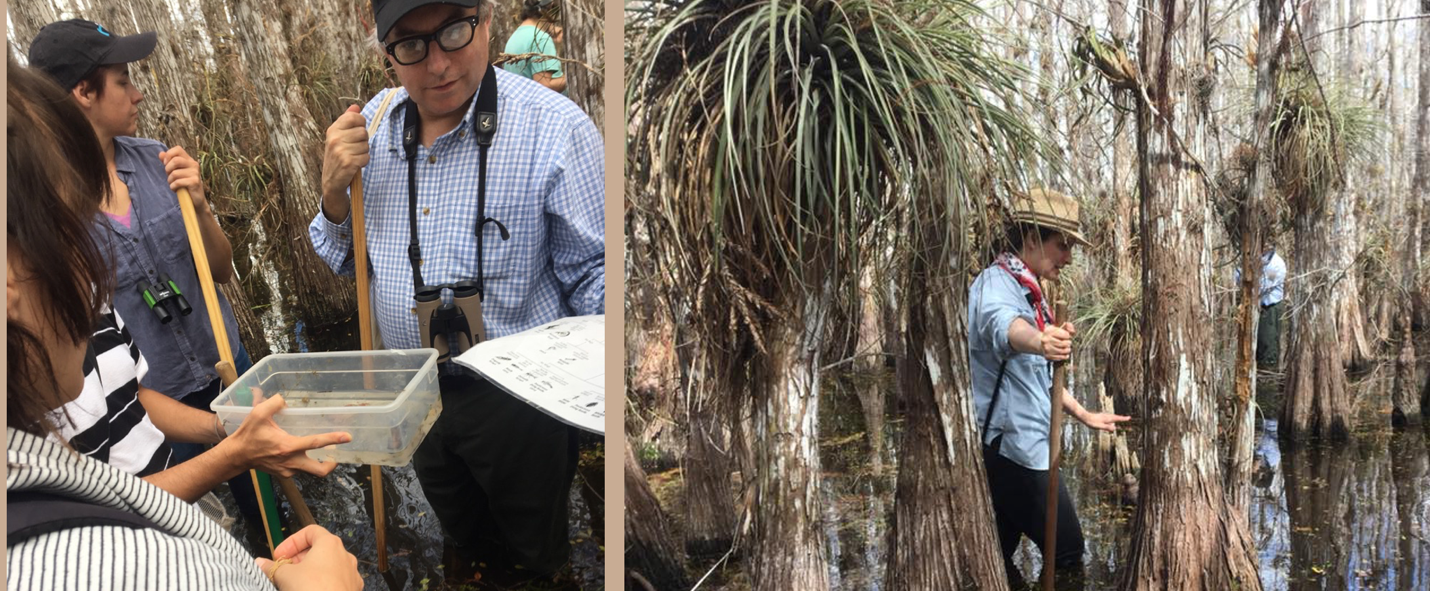
Photo: MFA students with teaching artists Mark Dion and Christy Gast in the Everglades, Florida, 2018.
Thank you, Carol, for expanding our horizons with your ideas and practice!